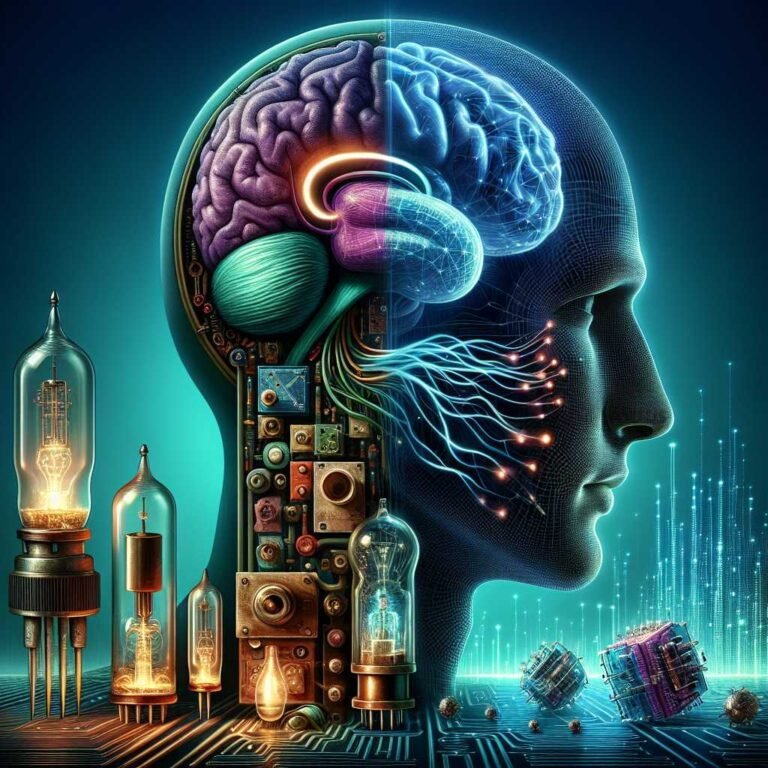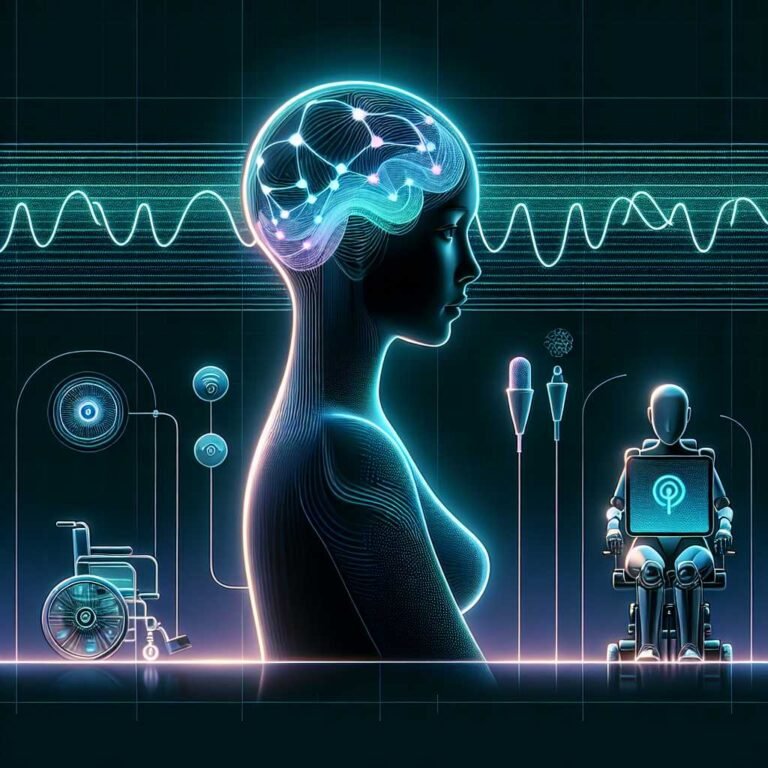Brain–Computer Interfaces and the Future of HCI: Why Tan & Nijholt’s Landmark Volume Still Sets the Bar
What if your computer could respond to your focus, your frustration, or your intention—without you clicking a single button? For decades, brain–computer interfaces (BCIs) lived in the realm of sci‑fi and mythology. Today, they’re a fast‑moving field bridging neuroscience and design—and they’re starting to reshape how we think about the very idea of “user input.”
If you’re BCI‑curious, you’ve probably wondered: How do these systems actually work? What’s hype versus reality? And where do designers, researchers, and product teams even begin? That’s where Brain-Computer Interfaces: Applying Our Minds to Human–Computer Interaction, edited by Desney S. Tan and Anton Nijholt, earns its reputation. Originally published in 2010 as part of the Human–Computer Interaction Series, this collection reads like a blueprint for the decade of innovation that followed—and it still offers the clearest path into a complex domain.
What Is a Brain–Computer Interface, Really?
Let’s keep it simple. A BCI is a system that detects patterns in your brain activity and translates them into commands a computer can understand. In practice, BCIs don’t read thoughts; they detect measurable signals (like oscillations in EEG data) that correlate with specific states or intentions.
The most common noninvasive modalities include: – EEG (electroencephalography): Measures electrical activity from the scalp. It’s cost‑effective and portable. – fNIRS (functional near‑infrared spectroscopy): Tracks blood oxygenation changes linked to brain activity using light sensors. – MEG (magnetoencephalography) and fMRI (functional MRI): Offer rich data but are costly and less practical for everyday use.
If you want a quick primer grounded in science, this overview by NINDS on BCIs is a great starting point.
Want the edited collection that maps this landscape end‑to‑end? View on Amazon.
Why This Book Matters for HCI and Product Teams
Tan and Nijholt’s volume stands out because it’s not only about decoding brain signals—it’s about what happens when these signals meet real interfaces. The editors invited leading researchers to tackle questions that still define the field: – How do we design interfaces that reduce cognitive load? – When should we use active control (think selection via P300 or SSVEP) versus passive sensing (e.g., detecting mental fatigue)? – How can BCIs make systems adaptive without being intrusive or unpredictable? – What are the ethical guardrails when measuring brain states in everyday contexts?
The authors weave technical rigor with HCI sensibilities. You’ll find signal processing and classifiers explained alongside user needs, workflows, and experimental design. That combination is rare—and essential—because it’s easy to get lost in the algorithms and forget the human.
Here’s why that matters: BCIs aren’t just “another input device.” They’re a contextual layer. They can sense engagement, frustration, attention shifts, or workload—and help software respond. Think micro‑adaptations: a tutorial that slows down when you’re overloaded, a cockpit display that simplifies when your cognitive load spikes, or an assistive typing system that adapts to your fatigue.
Ready to explore real‑world case studies and frameworks you can apply today? Shop on Amazon.
How BCIs Work: From Brain Signals to Usable Input
At a high level, most BCI pipelines follow five steps: 1) Sensing: EEG, fNIRS, ECoG, or other methods capture signals from brain activity. 2) Preprocessing: Filters remove noise from eye blinks, muscle activity, and environmental interference. 3) Feature extraction: Algorithms transform raw signals into informative features (e.g., power in specific frequency bands, event‑related potentials). 4) Classification: Machine learning models map features to states or commands (e.g., “focus vs. distraction” or “left vs. right” intention). 5) Feedback: The system responds—moving a cursor, selecting a letter, or adapting an interface—and the user learns to modulate their signals.
Two canonical paradigms you’ll see in the literature: – P300 speller: When a row or column containing your target letter flashes, your brain generates a P300 response; classifiers detect this to select characters. A foundational review is available in Frontiers in Human Neuroscience. – SSVEP (Steady-State Visually Evoked Potentials): Staring at a flickering target induces a frequency response in EEG; the system selects whichever frequency is detected. Here’s a deeper dive via Frontiers.
Let me explain with an analogy: Imagine listening to an orchestra in a noisy city square. Preprocessing is like using selective hearing to filter out traffic. Feature extraction focuses on the strings section. Classification identifies the specific melody. Feedback is the conductor responding to you in real time.
HCI Meets Neuroscience: Designing for the Brain in the Loop
The book’s central insight is that the “I” in HCI becomes more literal when the brain is part of the loop. Good HCI amplifies the signal and respects cognitive limits. Some practical principles: – Reduce cognitive overhead: BCI control must minimize memory demands and multitasking. Clear, consistent feedback boosts learnability. – Favor recognition over recall: Visual prompts, color coding, and spatial grouping help users stay in the zone. – Design adaptive, not intrusive systems: Passive BCIs can detect workload or fatigue; use that to simplify interfaces or time interventions. – Close the loop: Feedback should be immediate and interpretable—users need to know why the system did what it did. – Plan for variability: Brain signals drift. Interfaces should recalibrate gracefully and expose quick “retrain” options.
For cutting‑edge reporting across the neurotech landscape, the IEEE Spectrum neurotech channel is one to bookmark.
Real‑World Applications You Can Build Toward
BCI research isn’t only about clinical use. The applications span industries:
- Assistive communication: Systems enable people with ALS or spinal cord injuries to type and control devices using P300 or SSVEP paradigms.
- Neurorehabilitation: Motor imagery BCIs combined with feedback and robotics can accelerate recovery after stroke.
- Gaming and VR: Attention‑adaptive difficulty, emotion‑aware characters, and hands‑free control open new interaction paradigms.
- Safety and operations: Passive BCIs can monitor operator workload in aviation or industrial settings and adjust information density.
- Learning and productivity: Tools can detect engagement and nudge breaks or switch modalities when fatigue sets in.
Is everything market‑ready? Not yet. But when you start from an HCI mindset, you focus on measurable improvements: faster task completion, fewer errors, less cognitive strain. That’s how you ship value sooner—even as the tech continues to mature.
Choosing BCI Tools and Evaluating Specs: Practical Buying Tips
Whether you’re assembling a lab or prototyping a product, equipment and tooling choices matter. A few essentials to compare:
- Electrodes and comfort
- Wet EEG electrodes typically offer higher signal quality but require gel and cleanup.
- Dry electrodes are faster to set up and better for field studies but may introduce more noise.
- Channel count and coverage
- More channels enable richer spatial information (useful for source localization and complex paradigms), but they increase cost and setup time.
- Sampling rate and latency
- For P300 and SSVEP, you want adequate sampling (often 250–1000 Hz) and low‑latency pipelines for responsive feedback.
- Signal access and APIs
- Look for raw data access, SDKs, and Python/MATLAB toolchains so you can iterate quickly on preprocessing and classifiers.
- Fit and ergonomics
- Head sizes, hair types, and long sessions all matter. Consider adjustable headsets and materials that don’t cause pressure points.
- Validation and safety
- Check for peer‑reviewed validation studies, electrical safety certifications, and transparent specs.
- Total cost of ownership
- Budget for consumables (gel, cleaning supplies), spare electrodes, and time for calibration.
One more tip: align your paradigm to your constraints—SSVEP is robust for quick demos, while P300 suits selection tasks; passive measures are great for adaptive UI but require careful validation.
If you’re comparing EEG kits and research texts side‑by‑side, this book is a reliable anchor—See price on Amazon.
Signals, Classifiers, and UX: What Actually Improves Performance
You’ll see a lot of algorithms across the literature, but three levers consistently move the needle:
- Better signals
- Clean setup, good electrode contact, and well‑designed stimuli often outperform exotic algorithms.
- Smarter feedback
- Immediate, interpretable feedback accelerates user learning and stabilizes performance.
- Personalization
- Adaptive classifiers (e.g., transfer learning, online calibration) handle day‑to‑day signal drift and reduce frustrating failures.
A practical workflow that works: 1) Start with a simple, validated paradigm (e.g., SSVEP selection with three targets). 2) Establish a baseline with clean preprocessing and a straightforward classifier (e.g., LDA). 3) Iteratively add UX improvements (clear feedback, adjustable stimuli). 4) Layer in adaptive modeling once the UX is solid.
Want to build your reading list with a foundational BCI volume? Check it on Amazon.
Ethics, Privacy, and Regulation: Designing for Trust
Collecting brain data raises unique ethical stakes. Even noninvasive signals can reveal sensitive states if misused. If you’re designing or deploying BCIs, bake in guardrails early:
- Purpose limitation: Be explicit about what you measure and why.
- Consent and control: Give users clear choices and the ability to pause or delete data.
- On‑device processing where possible: Minimize raw data leaving the device; share only derived features needed for functionality.
- Bias and accessibility: Validate across diverse users; scalp and hair differences can affect signal quality.
- Safe defaults: Prefer paradigms and stimuli that minimize discomfort or fatigue.
For the regulatory angle, review the FDA’s guidance on implanted BCI devices for patients with paralysis (FDA BCI guidance) and the broader OECD Recommendation on Responsible Innovation in Neurotechnology.
Why a 2010 Book Still Feels Current
If you look at today’s splashiest demos—typing via imagined movement, cursor control with EEG, adaptive AR overlays—you’ll notice the underlying paradigms echo the foundations laid out in this book. The editors emphasized two ideas that define the next decade, too:
- Passive BCI is as powerful as active control
- Measuring workload, engagement, or affect can make every interface smarter—even if you never “think a command.”
- HCI methods are the multiplier
- Heuristics, usability testing, and iterative prototyping matter as much as classifiers. BCIs fail when they ignore the human.
Curious to dive deeper into the field that inspired today’s neurotech boom? View on Amazon.
A Learning Path Inspired by the Book
If you’re serious about building in this space, here’s a pragmatic path:
- Start with concepts
- Read accessible overviews (like NINDS on BCIs) and a couple review papers (P300 and SSVEP via Frontiers).
- Pick one paradigm and prototype
- Implement a minimal P300 or SSVEP pipeline. Keep stimuli simple; get feedback right.
- Validate with small studies
- Run 5–10 user sessions. Track accuracy, time to selection, and perceived workload (use NASA‑TLX).
- Layer in passive sensing
- Detect workload via spectral features or fNIRS if available; adapt UI complexity or timing.
- Document everything
- Reproducibility and clarity are currency in this field—version your models and calibration routines.
Prefer to learn from a curated, peer‑reviewed collection instead of scattered blog posts? Buy on Amazon.
Who Should Read Tan & Nijholt’s Brain–Computer Interfaces?
- UX and product leaders exploring adaptive interfaces
- HCI researchers adding physiological sensing to their toolkit
- Neuroscience students stepping into applied research
- Engineers building assistive technology or VR/AR interactions
- Ethicists and policy makers crafting responsible guidelines
Bottom line: this isn’t a narrow technical manual—it’s a bridge between disciplines, written by people who anticipated where the field was heading.
FAQ: Brain–Computer Interfaces and HCI
Q: Do BCIs read my thoughts? A: No. Current BCIs detect patterns correlated with specific states or responses (e.g., attention, a P300 event) rather than decoding free‑form thoughts.
Q: How accurate are consumer EEG headsets? A: They’re useful for demos and simple interactions, but signal quality, electrode count, and noise control are limited compared to research‑grade systems. Expect robust trends, not clinical precision.
Q: What’s the difference between active and passive BCI? A: Active BCI involves intentional control (e.g., selecting a target via P300). Passive BCI infers cognitive or affective states (e.g., workload) without explicit commands, enabling adaptive interfaces.
Q: How long does training take? A: Many paradigms work with minimal training—minutes to an hour. More advanced control (e.g., motor imagery) can require longer practice and personalized calibration.
Q: Is EEG the only way to do BCI? A: No. fNIRS, ECoG, MEG, and even hybrid approaches exist. EEG is popular due to cost and portability, while implanted methods offer stronger signals for clinical use.
Q: Are BCIs safe? A: Noninvasive methods like EEG and fNIRS are generally considered low risk when used properly. Implanted systems involve surgical risks and are governed by strict regulation; see the FDA’s guidance for details.
Q: What programming tools should I learn? A: Python (NumPy, SciPy, MNE, scikit‑learn), MATLAB, and real‑time frameworks for signal acquisition and processing. Visualization skills are vital for debugging.
Q: What are the biggest barriers to adoption? A: Signal variability, setup friction, user fatigue, and privacy concerns. Strong UX and ethical design can mitigate many of these challenges.
Q: Where can I follow the latest developments? A: Academic venues like Frontiers, IEEE EMBC, and ACM CHI, plus accessible reporting via IEEE Spectrum neurotech.
The Takeaway
Brain–computer interfaces are moving from the lab into products—not as mind‑reading devices, but as powerful context sensors and control aids. The smartest teams treat BCIs as an HCI problem first and a signal processing problem second. If you want a single resource that frames the field with clarity and ambition, Tan & Nijholt’s Brain-Computer Interfaces belongs on your desk. Keep exploring, keep testing with users, and subscribe for more deep dives at the intersection of neuroscience, design, and emerging tech.
Discover more at InnoVirtuoso.com
I would love some feedback on my writing so if you have any, please don’t hesitate to leave a comment around here or in any platforms that is convenient for you.
For more on tech and other topics, explore InnoVirtuoso.com anytime. Subscribe to my newsletter and join our growing community—we’ll create something magical together. I promise, it’ll never be boring!
Stay updated with the latest news—subscribe to our newsletter today!
Thank you all—wishing you an amazing day ahead!
Read more related Articles at InnoVirtuoso
- How to Completely Turn Off Google AI on Your Android Phone
- The Best AI Jokes of the Month: February Edition
- Introducing SpoofDPI: Bypassing Deep Packet Inspection
- Getting Started with shadps4: Your Guide to the PlayStation 4 Emulator
- Sophos Pricing in 2025: A Guide to Intercept X Endpoint Protection
- The Essential Requirements for Augmented Reality: A Comprehensive Guide
- Harvard: A Legacy of Achievements and a Path Towards the Future
- Unlocking the Secrets of Prompt Engineering: 5 Must-Read Books That Will Revolutionize You







